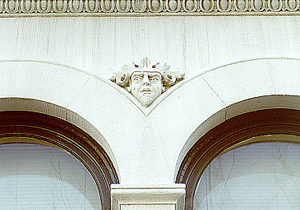
Comments
by Jeffrey A. Cohen, Ph.D.
Lecturer
Growth and Structures of Cities Program
Bryn Mawr College
Excerpted from the introduction to "The Changing Heart of the City: Building and Rebuilding Western 'Wash West,'" a 2000 exhibition mounted by the Library Company of Philadelphia. <www.brynmawr.edu/iconog>
Washington Square West is a neighborhood remarkable for its scale, its diversity, and its surviving historic fabric.
At various times the area has accommodated, often simultaneously, major portions of the city's elite residential quarters, its African American population, its high-end retail corridor, its most visible centers of night life (high and low), bookish Philadelphia and clubbish Philadelphia, its gay and lesbian community, and a host of small households at the heart of the city. This diverse character has been shaped since the area's initial development in the 1820s and 30s by the carving of minor streets and alleys within William Penn's grid, which brought different classes and uses together within his outsized blocks. The district still bears marks of the westward migrations of the fashionable elite and of high-end commerce along its northern half, and of the redefinition of its northern and western edges with tall office and commercial buildings whose deeper invasion was forestalled by the Depression. Its history has made the neighborhood a rich array of different moments and uses that can shift every dozen footsteps, a rare survival at the heart of a great city.
Recent and pending
reinvestment in this western part of "Washington Square West"—by
the Library Company of Philadelphia and the Historical Society of Pennsylvania,
by residential and commercial development interests, and in civic and
institutional initiatives on all four edges—seems to signal a new,
potentially transforming chapter in this neighborhood's history after
decades of relative stasis. ![]()
![]()
